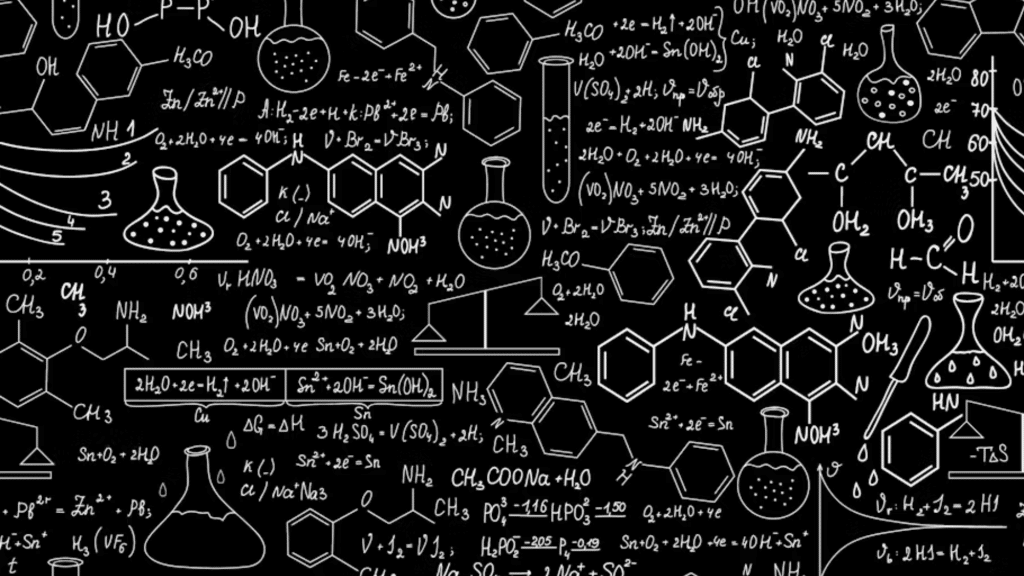Chemistry is all around you, from the soap you use to the air you breathe.
It helps explain how things mix, change, and even glow. Most people think chemistry is just hard tests and big words, but it is full of cool surprises.
These fun facts about chemistry can help you see how exciting science actually is.
No matter if you are a kid, a student, or just curious, there is something here for you.
Get ready to learn some amazing things about atoms, elements, and reactions happening around you every day.
Letters, Elements & the Periodic Table
The periodic table is full of surprises. These fun facts show how elements are named, where they come from, and what makes them special.
1. Which letters are missing from all element symbols on the periodic table?
The letters “J” and “Q” do not appear in any element symbol on the periodic table.
2. What metal stays liquid at normal room temperature?
Mercury is the only metal that remains liquid at standard room temperature.
3. Which element was found on the Sun before it was found on Earth?
Helium was identified in the solar spectrum before being found on Earth.
4. What makes up most of the human body by mass?
Oxygen makes up about 65% of the human body by mass.
5. What does the Greek word “atomos” mean?
“Atomos” means “indivisible” in Greek.
6. Which non-metal exists as a liquid at room temperature?
Bromine is a non-metal that is liquid at room temperature.
7. What element helps your thyroid work properly?
Iodine is necessary for the production of thyroid hormones.
8. What is the least common naturally occurring element on Earth?
Astatine is considered the rarest naturally occurring element.
9. Which element honors the creator of the periodic table?
Mendelevium is named after Dmitri Mendeleev.
10. What is the chemical formula for laughing gas?
Nitrous oxide, or N₂O, is commonly known as laughing gas.
11. What gas makes up most of Earth’s air?
Nitrogen makes up about 78% of Earth’s atmosphere.
12. Which element has a one-letter symbol not matching its first letter?
Potassium, symbol K, from the Latin word “kalium.”
13. Which noble gas forms compounds most readily?
Xenon can form compounds, unlike most noble gases.
14. What is the lightest of all noble gases?
Helium is the lightest of the noble gases.
15. Which group of metals reacts most strongly with water?
Alkaline metals (Group 1) are the most reactive with water.
16. What element is named after a country?
Francium is named after France.
17. What is the most common element in the universe?
Hydrogen is the most abundant element in the universe.
18. What is the heaviest element found in nature?
Uranium is the heaviest naturally occurring element.
19. Which element can bond with itself in three different forms?
Oxygen commonly forms O₂ and O₃; O₄ (tetraoxygen) molecules are rare and very unstable, mainly studied theoretically or under special conditions.
20. What element has the highest melting point?
Tungsten has the highest melting point of all elements.
21. Which element was named after a living person?
Seaborgium is named after Glenn T. Seaborg.
22. What is the only element that begins with X?
Xenon is the only element beginning with X.
23. What element can form more than one stable isotope with the same number of protons and neutrons?
No element can have more than one stable isotope with the same number of protons and neutrons; isotopes differ in neutron count, not having identical proton and neutron numbers.
24. What element is named after a planet?
Uranium is named after the planet Uranus.
25. What unusual melting behavior does gallium exhibit?
Gallium is a metal with a melting point around 29.76°C (85.58°F) and can melt in your hand due to body heat.
26. What are the two non-silvery metals?
Gold and copper are the only two metals that are not silvery in appearance.
27. What unusual physical states can bromine and mercury assume?
Bromine and mercury are unique as the only elements that are liquid at standard room temperature among solids.
28. What creates the smell after a lightning storm?
Lightning strikes produce ozone (O₃), which causes the sharp, clean scent after thunderstorms.
29. What is the chemical name for water?
Water’s chemical name is dihydrogen monoxide (H₂O).
30. How much salt is present in the average adult human body?
There are approximately 200 grams (about 0.4 pounds) of salt (NaCl) in the average adult human body.
31. What happens to water volume when it freezes?
Water expands as it freezes; an ice cube takes up about 9% more volume than the water used to make it.
Chemical Applications in Daily Life
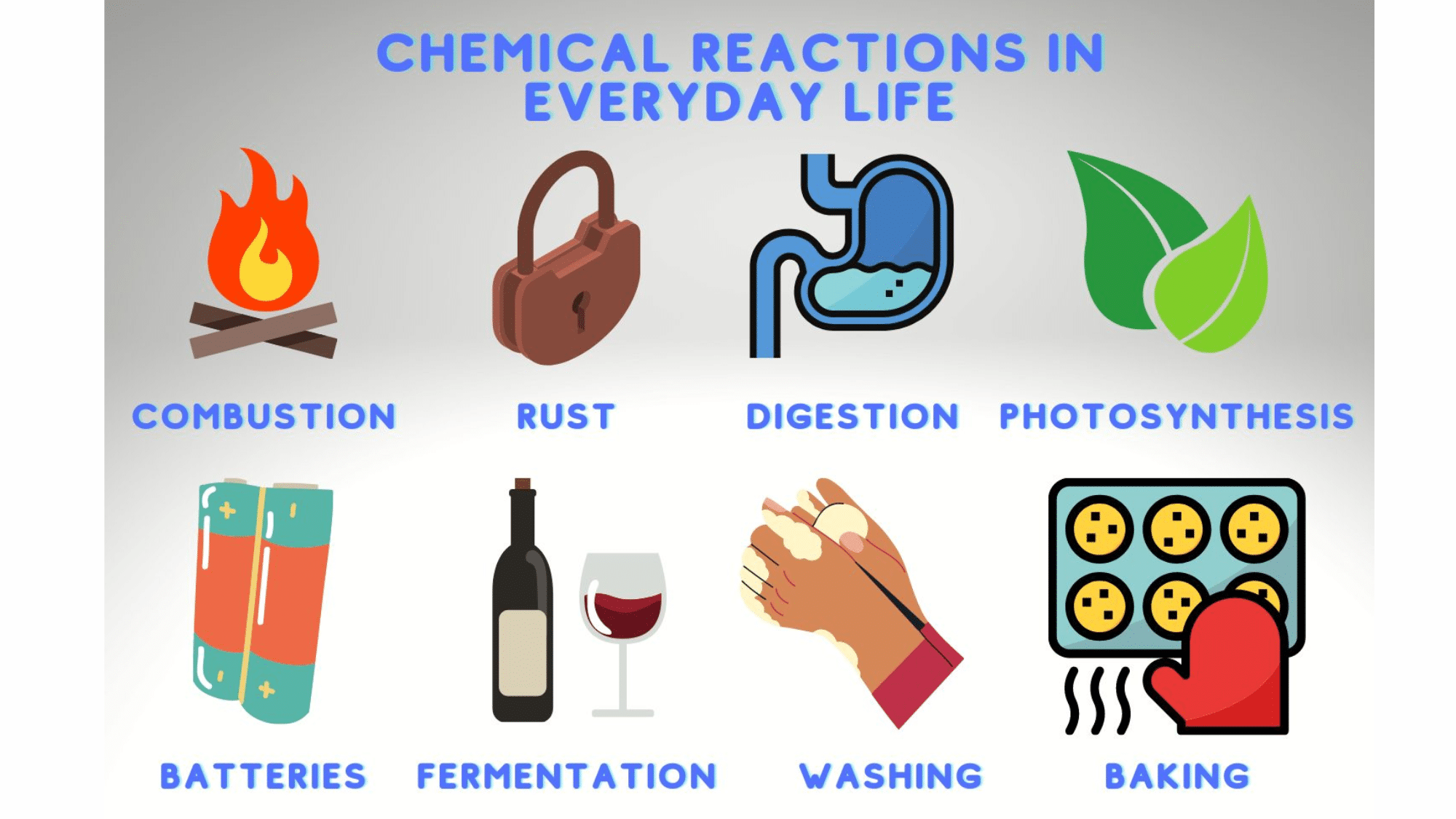
From soap to glass to car batteries, chemistry is all around us. These facts show how we use elements and compounds every single day.
32. What acid is found in car batteries?
Sulfuric acid is used in lead-acid car batteries.
33. What gas makes balloons float up in the air?
Helium is lighter than air and is used to fill balloons.
34. What causes the blue color in fireworks?
Copper compounds give fireworks their blue color.
35. What is the main substance in glass?
Silicon dioxide, or sand, is the primary ingredient in glass.
36. What element keeps swimming pools clean?
Chlorine is commonly used to keep pools clean.
37. How do plants make their own food?
Photosynthesis converts carbon dioxide and water into glucose and oxygen.
38. What toxic element was once common in thermometers?
Mercury was used in thermometers, but is known to be hazardous.
39. What element makes up pure diamonds?
Diamonds are pure carbon arranged in a crystal lattice.
40. What element is inside pencil’s “lead”?
Graphite, a form of carbon, is used as pencil “lead.”
41. What element is used for light bulb wires?
Tungsten is used for its high melting point in light bulbs.
42. What makes table salt?
Sodium chloride is a compound of sodium and chlorine.
43. What element helps smoke detectors work?
Americium is used in many smoke detectors.
44. What element is key for computer chips?
Silicon is the primary material for semiconductors.
45. What element is needed for strong bones and teeth?
Calcium is crucial for bone and dental health.
46. What element makes steel resist rust?
Chromium is added to steel to make it stainless.
47. What helps prevent cavities in toothpaste?
Fluoride, often as sodium fluoride, helps prevent cavities.
48. What gas fills fluorescent light bulbs?
Argon is commonly used in fluorescent bulbs.
49. What metal is a major part of many coins?
Copper is a major component of many coins.
50. What gives glass a blue color?
Cobalt gives glass a blue color.
51. What elements in sunscreen block UV rays?
Zinc oxide and titanium dioxide are common in sunscreens.
52. What key nutrient is in most fertilizers?
Nitrogen is a key nutrient in most fertilizers.
53. What is used to coat cans to prevent rust?
Tin is used to coat cans to prevent rust.
54. What is used in glow-in-the-dark paints?
Phosphorus is used for its light-giving qualities.
55. What is used to coat iron to prevent rust?
Zinc is used to coat iron and prevent rust.
56. What is used in the tips of matches?
Phosphorus is key in match tips.
57. What is used in the making of soap?
Sodium is used in the form of sodium hydroxide for soap making.
58. What is used to treat goiter?
Iodine deficiency can cause goiter, so iodine is used in treatment.
59. What is the main part of cement?
Calcium (as calcium oxide) is a major component of cement.
60. What is the main part of solder?
Tin is a main ingredient in solder.
Health and Medical Applications of Chemistry
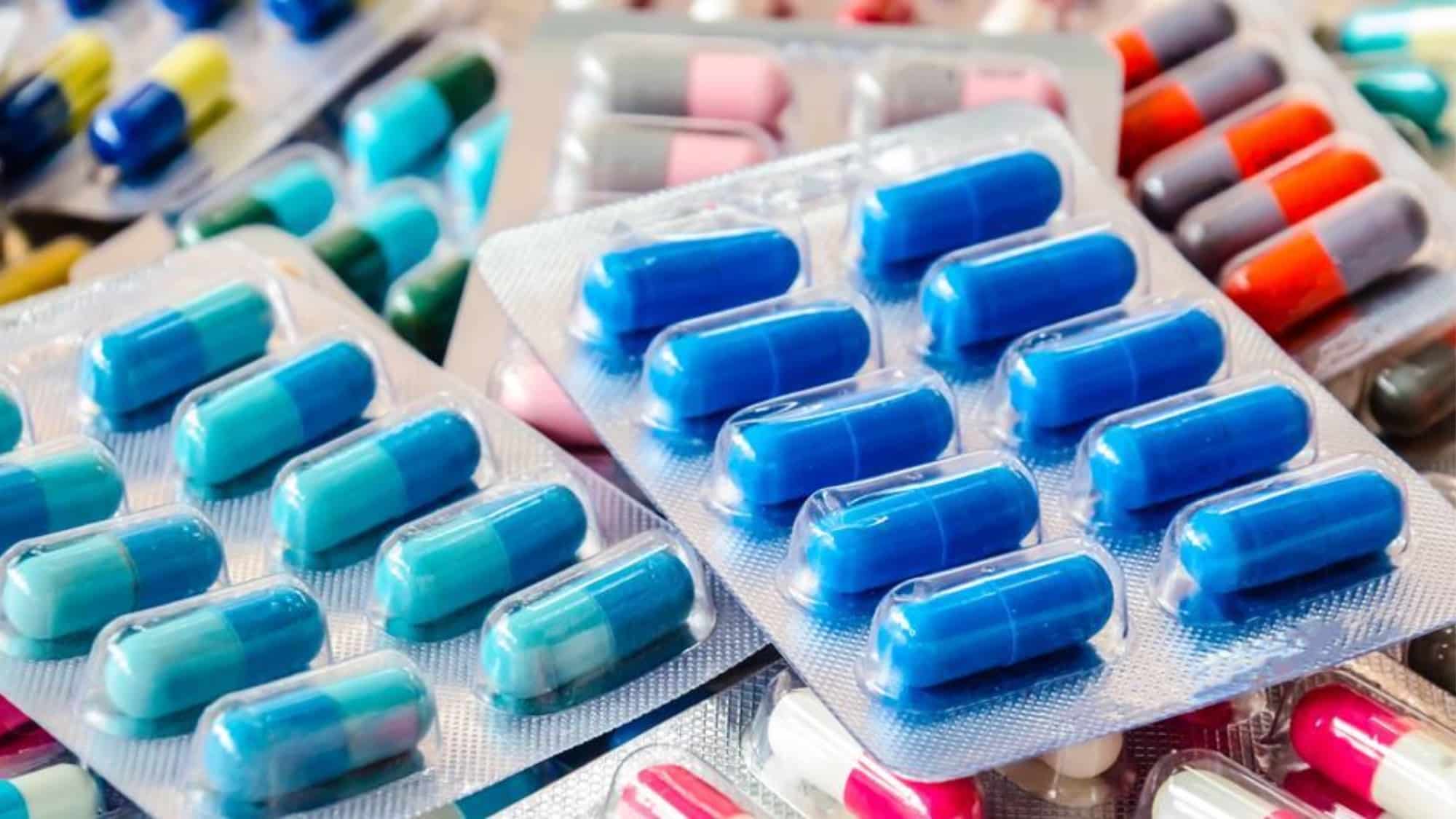
Chemistry helps doctors treat sickness and build tools that heal. These facts demonstrate the significant role elements play in maintaining our health.
61. What is used in small batteries for hearing aids?
Zinc is used in small batteries for hearing aids.
62. What is used as fuel in nuclear power plants?
Uranium is the primary fuel for nuclear reactors.
63. What is key in rechargeable batteries?
Lithium is used in many rechargeable batteries.
64. What element is used to treat bipolar disorder?
Lithium compounds are used as mood stabilizers.
65. What element is vital for red blood cells to carry oxygen?
Iron is essential for hemoglobin to transport oxygen in the blood.
66. What mineral is used to treat iron deficiency?
Iron supplements are used to treat iron deficiency anemia.
67. What metal is sometimes used in dental fillings?
Silver is often used in dental amalgam fillings.
68. What gas do we need to breathe to stay alive?
Oxygen is essential for human respiration and survival.
69. What element is found in vitamin B12?
Cobalt is a central component of vitamin B12.
70. What element is used to kill bacteria in water treatment?
Chlorine is used to disinfect and purify drinking water.
71. What gas is used in some medical procedures to put patients to sleep?
Nitrous oxide is used as an anesthetic in some medical procedures.
72. What element is essential for proper nerve function?
Potassium is crucial for nerve impulse transmission.
73. What is used in X-ray contrast media?
Barium is often used in X-ray studies of the digestive system.
74. What element is found in antacids for heartburn?
Magnesium and aluminum compounds are common in many antacids.
75. What element helps blood clotting?
Calcium is necessary for proper blood clotting.
76. What element is used in medical imaging of the thyroid?
Radioactive iodine is used to examine thyroid function.
77. What metal is used in hip replacements?
Titanium is often used in hip replacement implants.
78. What element is used in sunscreens as a physical blocker?
Zinc oxide acts as a physical sunscreen barrier.
79. What gas is stored in hospitals for patients who can’t breathe well?
Oxygen is stored in tanks for patients with breathing difficulties.
80. What is the most abundant mineral in our bones?
Calcium phosphate is the primary mineral in bone tissue.
81. What trace element is important for wound healing?
Zinc plays a key role in wound healing and immune function.
82. What element is found in the medication for low thyroid function?
Synthetic thyroid hormones contain iodine compounds.
83. What element is used in radiation therapy for cancer?
Cobalt-60 is used in some forms of radiation therapy.
84. What element in our diet helps maintain proper fluid balance?
Sodium helps regulate fluid balance in the body.
85. What mineral supplement is given for leg cramps?
Magnesium supplements can help relieve muscle cramps.
86. What trace element is needed for insulin function?
Chromium is thought to enhance insulin function.
87. What element in the body helps maintain heart rhythm?
Potassium is essential for normal heart rhythm.
88. What mineral is sometimes given by IV for heart problems?
Magnesium sulfate is given intravenously for certain heart issues.
89. What element in compounds treats depression?
Lithium compounds are used to treat bipolar disorder and depression.
90. What happens when you mix alcohol and water?
When mixing half a liter of alcohol with half a liter of water, the total volume is less than one liter due to molecular interactions.
Fireworks and Color Chemistry
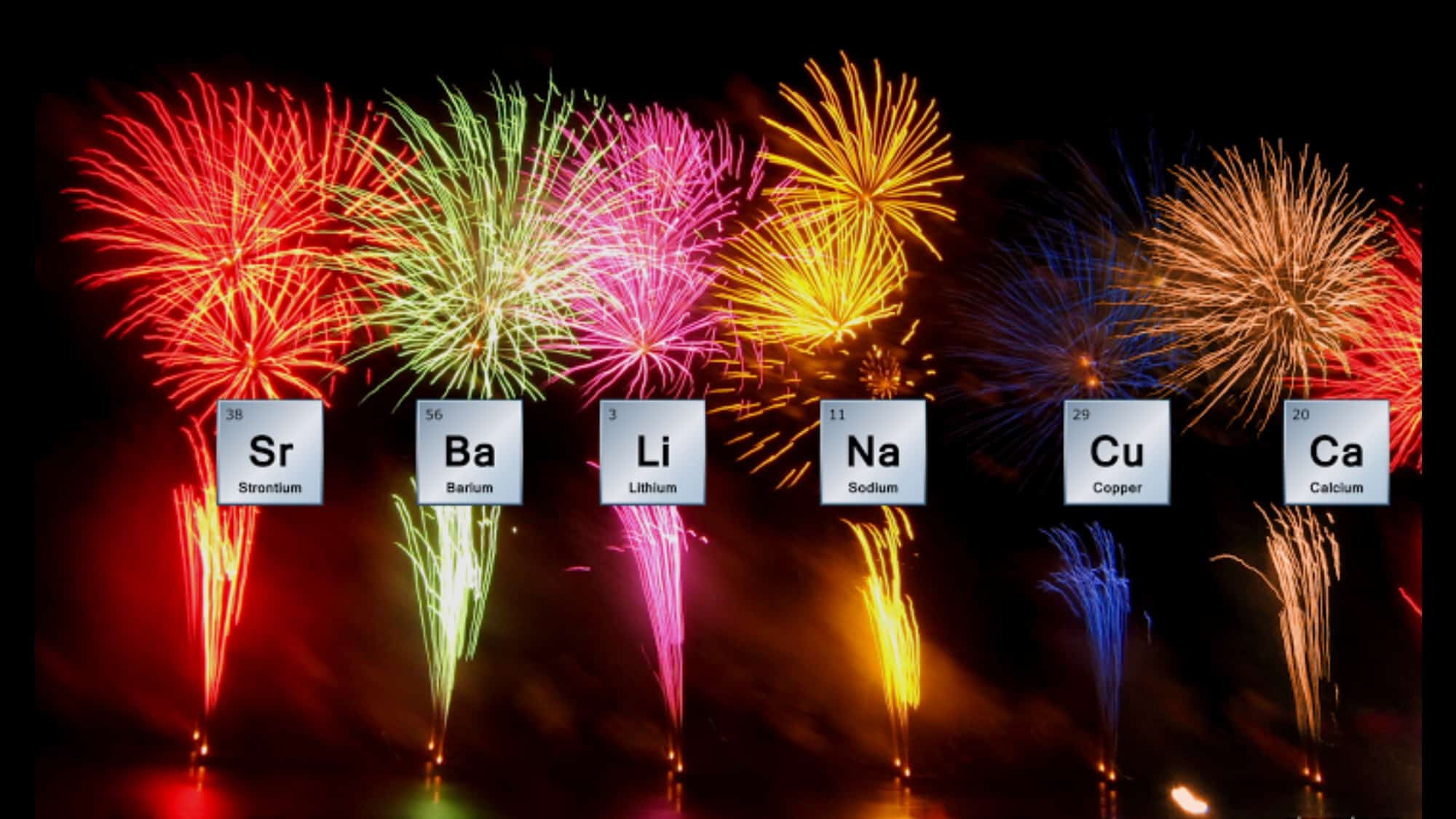
Fireworks are full of color and noise, thanks to science. These facts show how different elements make each sparkle, pop, and glow.
91. What gives fireworks a red color?
Strontium compounds give fireworks a red color.
92. What element creates green colors in fireworks?
Barium compounds produce green in fireworks.
93. What creates white light in fireworks?
Magnesium produces bright white light in fireworks.
94. What makes purple colors in fireworks?
Potassium compounds are used for purple hues.
95. What creates orange colors in fireworks?
Calcium salts produce orange colors in fireworks.
96. What makes yellow colors in fireworks?
Sodium compounds give a yellow color to fireworks.
97. What creates silver sparks in fireworks?
Aluminum or magnesium can create silver sparks.
98. What makes gold effects in fireworks?
Iron filings or charcoal produce gold effects.
99. What creates pink colors in fireworks?
A mix of strontium and lithium compounds can make pink.
100. What makes turquoise colors in fireworks?
Copper and chlorine compounds create turquoise.
101. What chemical makes glow sticks work?
Hydrogen peroxide is the activator in glow sticks.
102. What creates crackling sounds in fireworks?
Bismuth compounds create crackling effects in fireworks.
103. What makes whistling sounds in fireworks?
Organic salts of potassium and sodium can create whistling effects.
104. What creates strobe effects in fireworks?
Magnesium and barium compounds are used for strobes.
105. What makes comet effects in fireworks?
Aluminum and magnesium powders are common in comet stars.
106. What creates brocade effects in fireworks?
Iron filings create brocade or willow effects.
107. What makes peony burst patterns in fireworks?
A mixture of metals and oxidizers creates peony bursts.
108. What creates chrysanthemum patterns in fireworks?
Iron and charcoal produce chrysanthemum patterns.
109. What makes willow-like trails in fireworks?
Charcoal and iron filings are used for willow-like trails.
110. What creates the swimming spark effects in fireworks?
Aluminum and magnesium compounds are used for swimming sparks.
111. What creates palm tree effects in fireworks?
Large stars with metal powders create palm tree effects.
112. What creates crossette burst effects?
Specially shaped stars with potassium perchlorate create crossette bursts.
113. What makes ring-shaped bursts in fireworks?
Stars arranged in a ring pattern create ring-shaped bursts.
114. What creates loud bangs in fireworks?
Flash powder, often a mix of potassium perchlorate and aluminum, creates loud bangs.
115. What lifts fireworks into the air?
Black powder lifts fireworks into the air.
116. What makes fireworks explode in the air?
Burst charges use a mix of oxidizers and fuels for an explosion.
117. What creates waterfall cascades in fireworks?
Long-burning compositions create waterfall cascades.
118. What makes crackling tails in fireworks?
Bismuth trioxide creates crackling tails.
119. What creates glittering sparks in fireworks?
Antimony compounds are used for glittering sparks.
120. What slows down the burn for longer trails in fireworks?
Charcoal slows down the burn rate for longer trails.
Industrial and Technological Uses of Chemistry
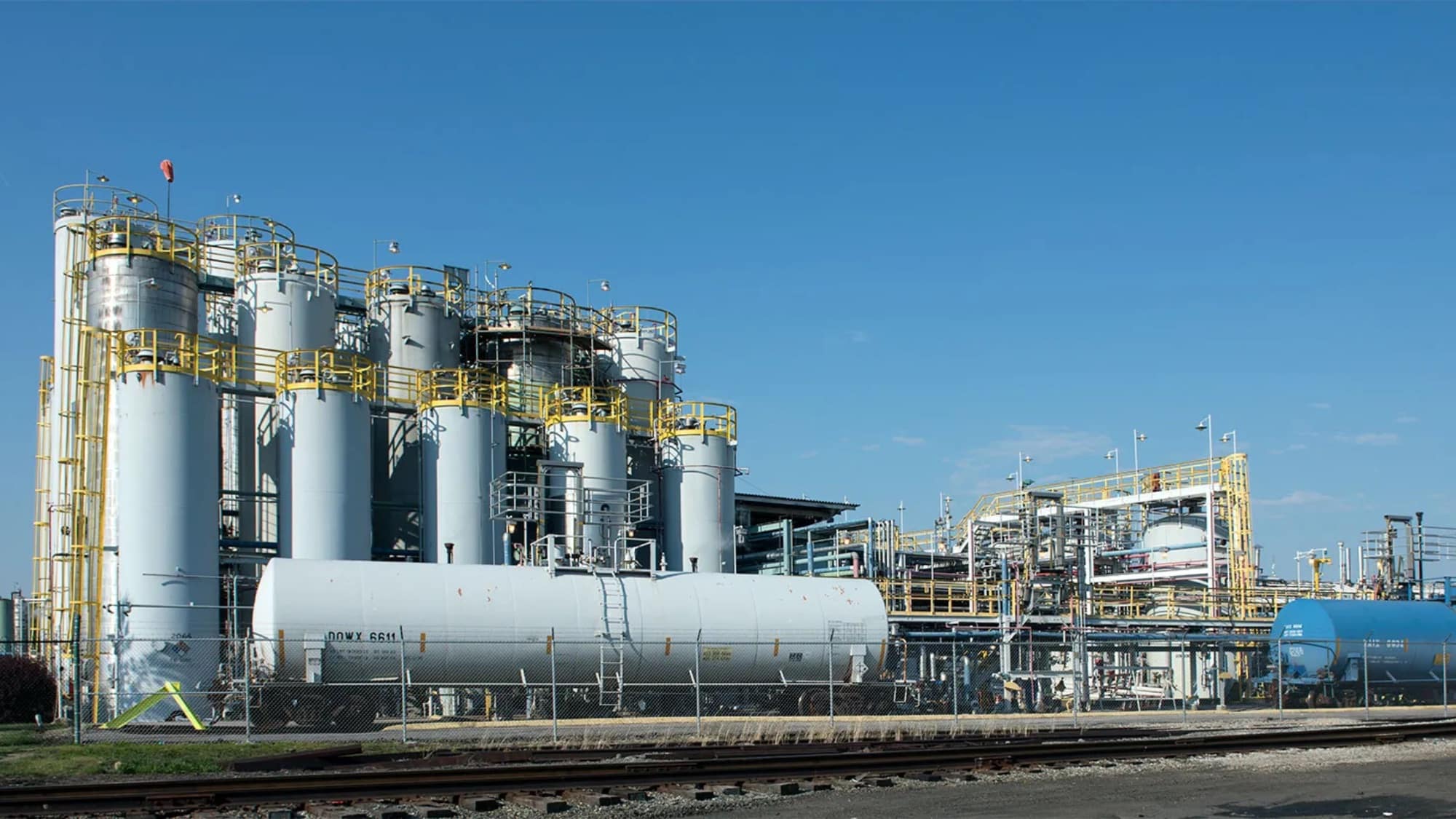
From phones to planes to power, chemistry makes it all work. These facts show how elements help build and power the things we use every day
121. What element is in the strongest magnets?
Neodymium is used in powerful magnets.
122. What element makes mirrors reflective?
Silver is often used to coat mirrors.
123. What element/compound is used to sterilize medical equipment?
Ethylene oxide gas is used to sterilize medical equipment due to its effective antimicrobial properties.
124. What element is used in the tips of quality pens?
Iridium is often used for the tips of fountain pens.
125. What element is used in making stainless steel?
Chromium is added to steel to make it stainless.
126. What element is used in welding to prevent oxidation?
Argon is used as a shielding gas in welding.
127. What element is key for making aluminum strong enough for airplanes?
Copper is added to aluminum to make strong alloys for aircraft.
128. What element is used in car catalytic converters?
Platinum helps convert harmful gases in catalytic converters.
129. What element is used in making rubber products?
Sulfur is used to vulcanize rubber for various products.
130. What element helps make electronic circuits on silicon chips?
Boron and phosphorus are used as dopants in semiconductor manufacturing.
131. What element is used in making strong, light bicycle frames?
Titanium creates strong, lightweight bicycle frames.
132. What element is used in making lead-free solder?
Silver is often included in lead-free solder compositions.
133. What element is used in making high-strength steel?
Manganese increases the strength and hardness of steel.
134. What element is used in making long-lasting batteries?
Lithium is key for high-capacity rechargeable batteries.
135. What element is used to make photovoltaic cells for solar panels?
Silicon is the main material in most solar panels.
136. What element is used in automotive spark plugs?
Platinum or iridium is used in spark plug electrodes.
137. What element is used in making superconductors?
Niobium is used in some superconducting materials.
138. What element is used in making LED lights?
Gallium is used in LED semiconductor compounds.
139. What element is used in making airplane jet engines?
Nickel is a key component of high-temperature jet engine alloys.
140. What element is used in making hard drives?
Cobalt is used in hard drive magnetic storage media.
141. What element is used in making touch screens?
Indium tin oxide is used to make transparent conductive coatings.
142. What element is used in making fiber optic cables?
Silicon dioxide is the main material in optical fibers.
143. What element is used in making watch springs?
Nickel is used in making hairsprings for watches.
144. What element is used in making artificial joints?
Titanium is used for its biocompatibility in joint replacements.
145. What element is used in making golf club heads?
Titanium is used for lightweight, strong golf club heads.
146. What element is used in making airbag sensors?
Gold is used in reliable electrical contacts for airbag sensors.
147. What element is used in making high-end cookware?
Copper provides excellent heat conductivity in quality cookware.
148. What element is used in making laser pointers?
Gallium is used in the semiconductor diodes of red laser pointers.
149. What element is used in making bulletproof glass?
Boron compounds are used in some types of bulletproof glass.
150. What element is widely used in rechargeable nickel-metal hydride (NiMH) batteries?
Lanthanum is commonly used in rechargeable nickel-metal hydride (NiMH) batteries.
151. What element is essential in producing white LEDs and is used as a phosphor?
Yttrium is used as a key component in phosphors for white LED lighting.
The Bottom Line
These fun facts about chemistry show how science helps explain the world in simple ways.
From the food you eat to the colors in fireworks, chemistry is everywhere. It is not just something you learn in school; it is something you can see and use every day.
If one of these facts surprised you, try finding one more on your own. Look around, ask questions, or read something new.
There is always more to learn when you stay curious about how things work.

